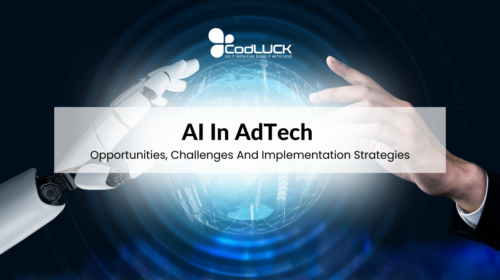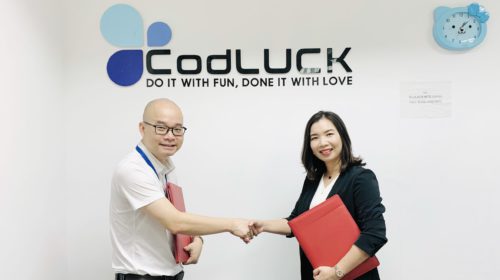In recent years, businesses have been promised many revolutionary technologies, ranging from blockchain to redefining how we share data, non-fungible tokens (NFT) to empower digital asset ownership, and the metaverse, which was supposed to disrupt how we perceive what constitutes the workplace.
Generative AI (or GenAI) – is also regarded as transformative. It’s a technology that can handle activities that until recently we thought only humans could do, such as brainstorming and generating content. We’ll explore how it genuinely disrupts operations in the main horizontal business functions – and finally, we’ll consider the key factors in a strategic, enterprise-wide implementation.
This is a field that’s moving fast – and as we’ll see, organizations need to keep pace.
Going Beyond The Hype
GenAI is a ground-breaking technology that is part of a wider AI and data science toolkit designed to analyze and replicate the characteristics and patterns found within large sets of data. It can be used for a range of applications, from creating text, images, and videos in different styles to generating tailored content. It enables automated business systems to perform tasks previously reserved exclusively for humans – particularly those requiring creativity, empathy, and experience (see Figure 1).
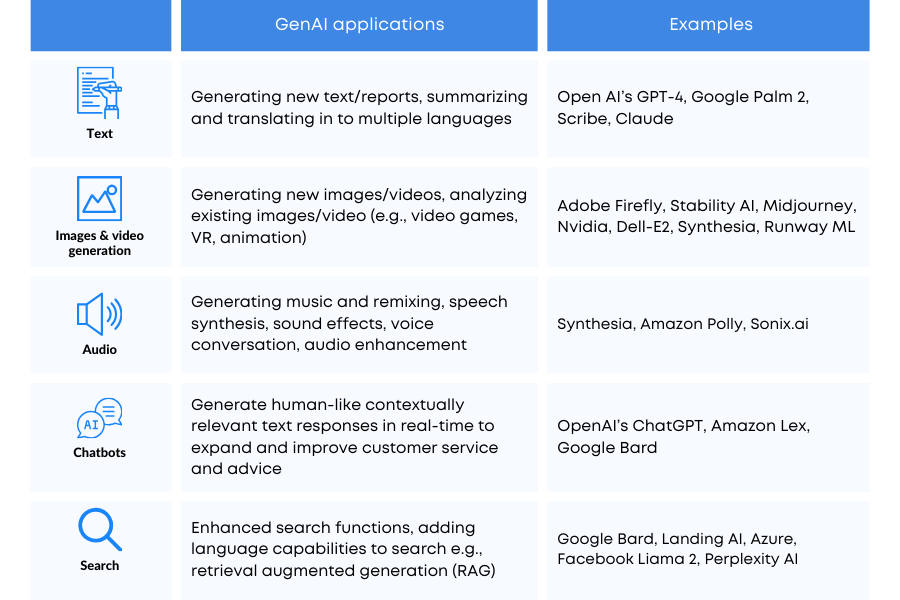
Source: Capgemini Research Institute, Generative AI and the evolving role of marketing: A CMO’s Playbook, 2023
The technology can be conceived as a highly-skilled assistant or artist that acts on requests or “prompts,” and uses a broad scale of information and experience gathered from open data sources (such as the internet), as well as from closed data sources and experiences, such as those gleaned from within the enterprise.
It’s worth noting that some GenAI tools such as large language models (LLMs), which are used to power chat-based self service systems, do not possess their own knowledge, but augment their text generation capabilities with patterns found in supplied data sources.

Generative AI (GenAI) is transforming business processes by enabling more innovative and personalized services, driven by enterprise-owned data. Its rapid rise is embedding futuristic concepts into industry standards, with use cases like automating data analysis, client interactions, and multilingual manual creation. The focus is not just on being cutting-edge but on enhancing client experiences and staying competitive.
To scale GenAI, businesses must decide its strategic role, prepare their workforce, and implement it iteratively. However, concerns about trust, security, privacy, and misinformation need to be addressed despite its immense transformative potential.
The Context for Implementation
One of the most well-known implementations of GenAI is, of course, ChatGPT. However, a wide range of other dedicated solutions could provide even more efficient results depending on the specificities and data ecosystem used for training.
How can GenAI transform business operations? Here’s a brief overview:

In finance operations, it enables predictive analytics for risk assessment, fraud detection, and personalized financial advice.
Supply chain operations benefit from AI-driven demand forecasting, inventory optimization, and real-time logistics management, enhancing agility and reducing costs.
Client operations leverage Generative AI for personalized marketing campaigns, sentiment analysis, and customer service automation, fostering deeper engagement and loyalty.
HR operations are streamlined through AI-powered recruitment processes, talent management, and employee feedback analysis, facilitating better decision-making and employee satisfaction.
Moreover, Generative AI facilitates the creation of synthetic data for training models, overcoming data scarcity issues.
By harnessing Generative AI across these domains, businesses can unlock unprecedented insights, drive innovation, and achieve sustainable growth in an increasingly competitive landscape.
Applying GenAI Across Key Business Areas
Human Resources
The introduction of GenAI in HR is transforming every aspect of moments that matter to employees – from recruitment, through development, to retirement.
1. Enhancing efficiency and precision in recruitment processes by utilizing AI-powered tools
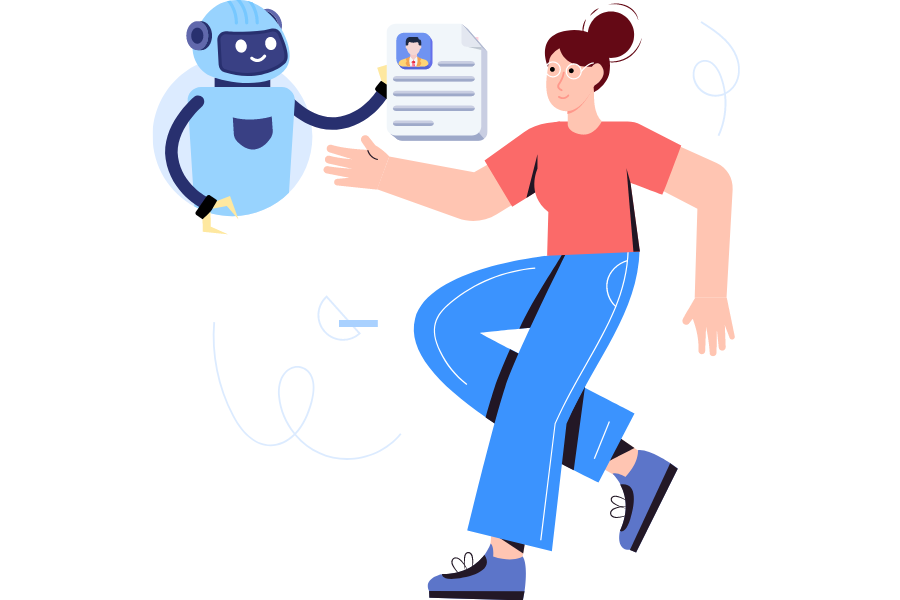
With advances in GenAI, companies can move swiftly through large volumes of candidate profiles, identifying the most suitable candidates based on actual skills, experience, and cultural fit, while providing a seamless and proactive experience to each.
2. Tailoring the employee experience
Tailoring the employee experience by automating most routine tasks such as year-end performance reporting, or boosting morale with individually customized communications. GenAI makes this a reality as part of augmented self-service for employees, providing recommendations, creating bespoke development content, proactively automating most routine tasks such as year-end performance reporting, or boosting morale with individually customized communications.
3. Enhancing engagement and well-being
Enhancing engagement and well-being by providing anonymized insights from employee feedback and implementation recommendations, enabling HR teams to make data-driven decisions that improve the working environment, directly impacting the satisfaction, productivity, and loyalty of employees.
Finance and Accounting
GenAI can serve the strategic intelligence unit of the business by improving the automation ratio of data preparation and analysis tasks.
1. Automating F&A for accuracy and insight
Automating F&A for accuracy and insight to improve business processes beyond productivity and capacity, as well as automating quick wins such as document processing. This brings the next level of precision and insight gained from the contextual understanding of emails, notes, and policies – thereby enhancing financial reporting, budgeting, forecasting, and analytical commentary.
By expanding the scope of automation, the business can not only gain deeper insight into contextualized financial performance but can also enable more persona-driven insights.
Why? Because analysts and CFOs will require different levels and different kinds of analysis support to inform their strategic or operational level decisions. GenAI will also enhance footnotes and comment sections in financial reports, making them more readable for stakeholders and third parties.
2. Rethinking the management of risk and compliance
By providing advanced analytics and predictive capabilities with comprehensible simulations, explanations, and recommendations – not only detecting financial anomalies but also aggregating information about market trends, news and evolving regulations.
This increases the organization’s proactive ability to manage expectations and safeguard financial health while reinforcing its transparency, integrity, and reliability as a business partner.
Supply Chain
Globally, the supply chain will benefit from GenAI by reducing working capital, increasing automation at scale, and increasing revenue.
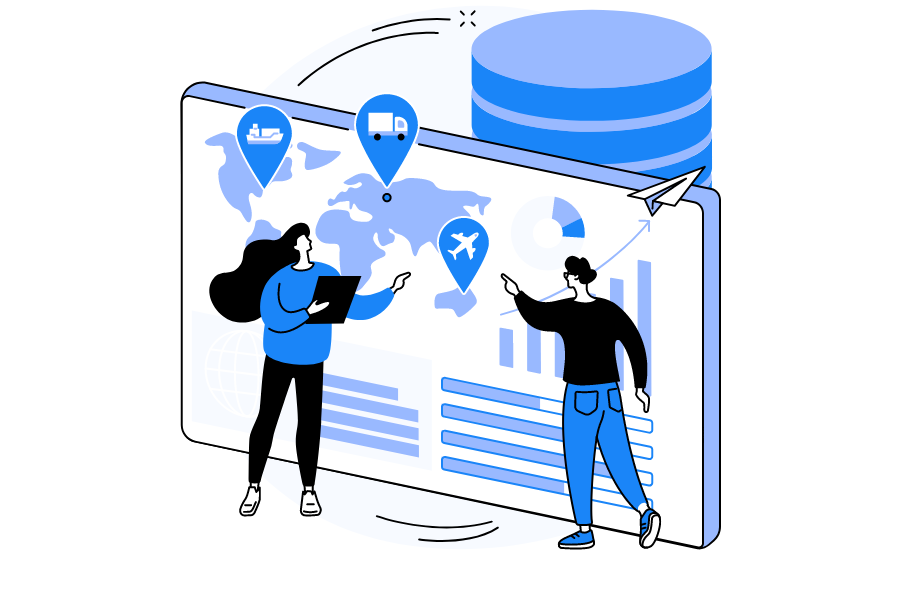
Let’s focus on six main areas:
1. Master data management
Automatic verification for duplicates; merges of similar records; automatic extractions from complex documents; relationships and dependencies between entities; and more.
2. Planning optimization
Optimizing demand, supply, and inventory planning much more efficiently by analyzing multiple data sources to propose new solutions and concrete decisions; simulating various scenarios to provide intuitive and interactive recommendations; predicting lead times for POs; improving production and transit lead times; generating summaries from dashboards and complex information; automatic benchmarking of equipment/materials, and more.
3. Fulfillment
Understanding unstructured documents; enabling users to participate in conversation-based learning; identifying the root cause of the delays/risks; automating reports with multilingual GenAI-powered conversational AI; optimizing inventory management and efficient order fulfillment at scale; providing early warnings for erratic order identification; and generating automatic responses for query resolution.
4. Sourcing/category management
Providing real-time market insights from multiple platforms; and generating automatic recommendations.
5. Product lifecycle management

Automating data analysis and fuzzy matching to achieve coherence and quality; detecting anomalies with automated quality control; recognizing patterns and features.
6. Procurement
Quickly analyzing complex business activities and predicting future market developments; unlocking unmatched insights and efficiency; assisting in supplier selection by evaluating multiple factors (such as cost, quality, reliability, and performance history); continuously monitoring supplier performance and flagging potential issues before they arise, thereby strengthening vendor relationships.
Contact Center
Globally, the supply chain will benefit from GenAI by reducing working capital, increasing automation at scale, and increasing revenue.
1. Redefining the customer center so it becomes the client’s favorite part of doing business with the organization
By switching the focus from average handling time (AHT) to actionable net promoter score (NPS). GenAI-powered solutions in contact centers can not only improve handling inbound queries but automate the whole process end-to-end in a self-service model, creating unparalleled client experience along the way.
Advanced self-service systems powered by LFMs can understand, respond, and trigger the automation needed by clients with degrees of precision, personalization, and scale that are unmatched by humans – making every interaction feel uniquely tailored to the client context.
2. Elevating customer interactions by giving the business a friendly face
Elevating customer Interactions by giving the business a friendly face through a digital avatar that provides multilingual, multi-channel, context-driven emotion, and empathy, regardless of when or how clients make contact.

All inquiries will be handled with speed and accuracy, but responses will also be personalized, unscripted, and in line with your operating procedures, policies, strategy, and brand values.
3. Tailor customer engagement
By anticipating customer needs and offering proactive solutions, ensure that everyone feels understood and valued for their business while maintaining standardization and optimization of business processes on a global scale.
By analyzing global patterns in communication and preferences, GenAI can provide an unparalleled capacity to foster deeper relationships and greater loyalty – and without increasing operating costs.
Innovating or Reinventing – is One Step at A Time The Right Approach?
Selecting the right use cases for GenAI is crucial. It needs to be aligned with organizational objectives and strategy, identifying areas where its application will make the most significant difference, both for the organization and the process stakeholders, internally and externally.
The selection process should look beyond the typical low-hanging-fruit or proof-of-concept project types that address minor efficiencies, and focus instead on areas where AI (including GenAI) can fundamentally transform business operations, enhance customer and employee experiences, and, most importantly, generate new value.
Moreover, immediate focus on large-scale deployments from the very beginning is essential to ensure long-term business value, cost, and process controls. While it might be tempting to test the water with smaller projects, the true value of GenAI comes from its transformative potential to unify business processes into a frictionless chain of experiences rather than, say, small steps in documentation.
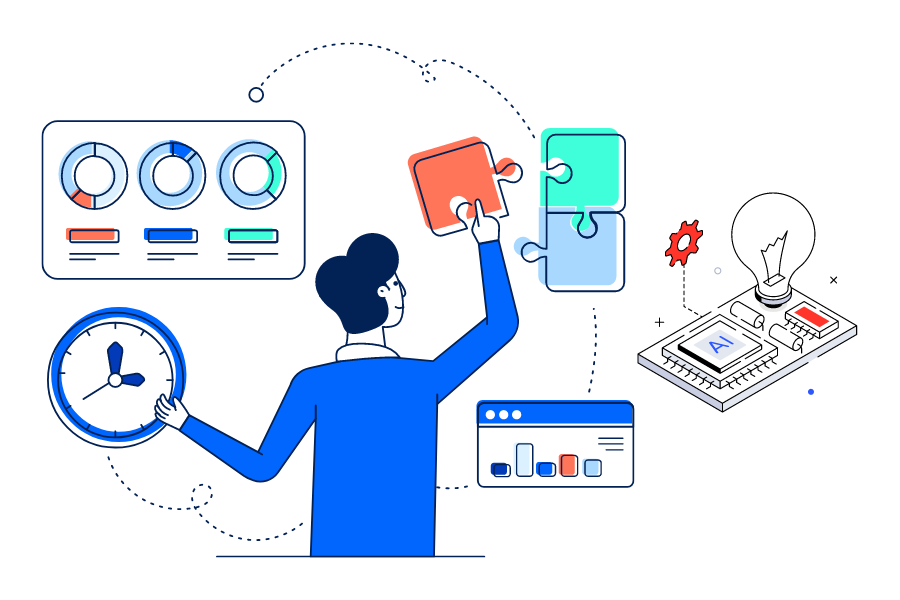
In addition, large-scale deployments do not mean ill-considered implementations across multiple use cases, but a thoughtful, strategic implementation that considers the preexisting data and automation estate of an organization, undertaking transformation initiatives and responding to market trends, thereby changing customers’ buying behaviors.
Finally, GenAI presents a unique opportunity not just to improve the technological foundation of business processes or innovate automation estate, but to truly rethink and redesign how business is done and what the work of employees is really about.
By considering this broader objective, businesses can take advantage of GenAI not just to automate business processes across HR, the supply chain, finance and accounting, or the contact center, but to create entirely new models, setting new standards in efficiency, customer satisfaction and strategic growth.
GenAI Partner’s Selection Criteria to Consider
As we’ve noted, GenAI is moving fast, and the scenarios described in this article are becoming realities with each week that passes. Does that mean that organizations should scramble to get started?
In our view, no. Businesses can’t afford to be left behind, but at the same time, it’s vital to enter this field with defined objectives and a sense of direction. A headlong rush won’t deliver long-term strategic benefits. They need to hurry but hurry slowly. What major enterprises should therefore consider is working with a partner to keep them company on the road to a GenAI-empowered future.
What should the selection criteria be? In an enterprise-wide GenAI implementation, what would be the ideal attributes of a solutions provider?
Here are a few criteria to consider:
1. A strong vision and a creatively open mind on the way new technologies can be adopted
2. A long experience in enterprise-wide systems development, specifically including artificial intelligence in general and GenAI in particular
3. The infrastructure needed to support global implementations at scale, including multinational operations in multiple languages, centers of excellence, and certified professionals across major
geographies
4. A verifiable track record of success against basic metrics including productivity, efficiency, savings, spend visibility, and compliance
5. Well-established relationships with leading third-party GenAI providers
6. Recognition from respected third-party organizations, such as leading analyst groups
It’s an exhilarating journey, but also a challenging one – and that’s why it’s a good idea to seek out a dependable traveling companion.
Source: Capemini
